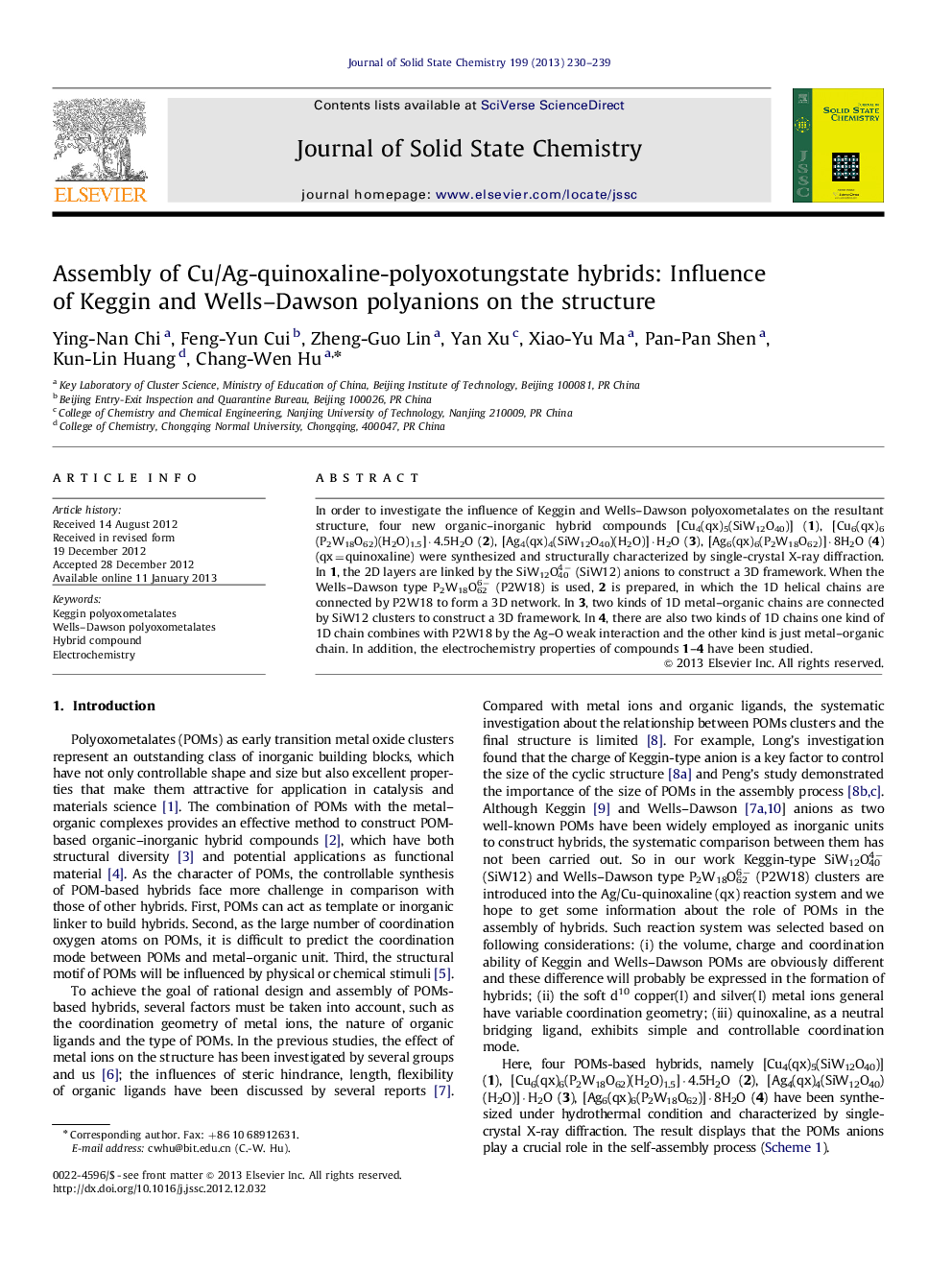| Article ID | Journal | Published Year | Pages | File Type |
|---|---|---|---|---|
| 1330004 | Journal of Solid State Chemistry | 2013 | 10 Pages |
In order to investigate the influence of Keggin and Wells–Dawson polyoxometalates on the resultant structure, four new organic–inorganic hybrid compounds [Cu4(qx)5(SiW12O40)] (1), [Cu6(qx)6(P2W18O62)(H2O)1.5]·4.5H2O (2), [Ag4(qx)4(SiW12O40)(H2O)]·H2O (3), [Ag6(qx)6(P2W18O62)]·8H2O (4) (qx=quinoxaline) were synthesized and structurally characterized by single-crystal X-ray diffraction. In 1, the 2D layers are linked by the SiW12O404− (SiW12) anions to construct a 3D framework. When the Wells–Dawson type P2W18O626− (P2W18) is used, 2 is prepared, in which the 1D helical chains are connected by P2W18 to form a 3D network. In 3, two kinds of 1D metal–organic chains are connected by SiW12 clusters to construct a 3D framework. In 4, there are also two kinds of 1D chains one kind of 1D chain combines with P2W18 by the AgO weak interaction and the other kind is just metal–organic chain. In addition, the electrochemistry properties of compounds 1–4 have been studied.
Graphical abstractFour new POMs-based hybrids have been synthesized and the results indicate that Keggin and Wells–Dawson polyanions play an important role in the assembly of hybrids.Figure optionsDownload full-size imageDownload as PowerPoint slideHighlights► The POM-based compounds 1–4 have been synthesized and characterized. ► Their electrochemistry properties have been studied. ► The volume and coordination ability of POMs play an important role in the assembly.
